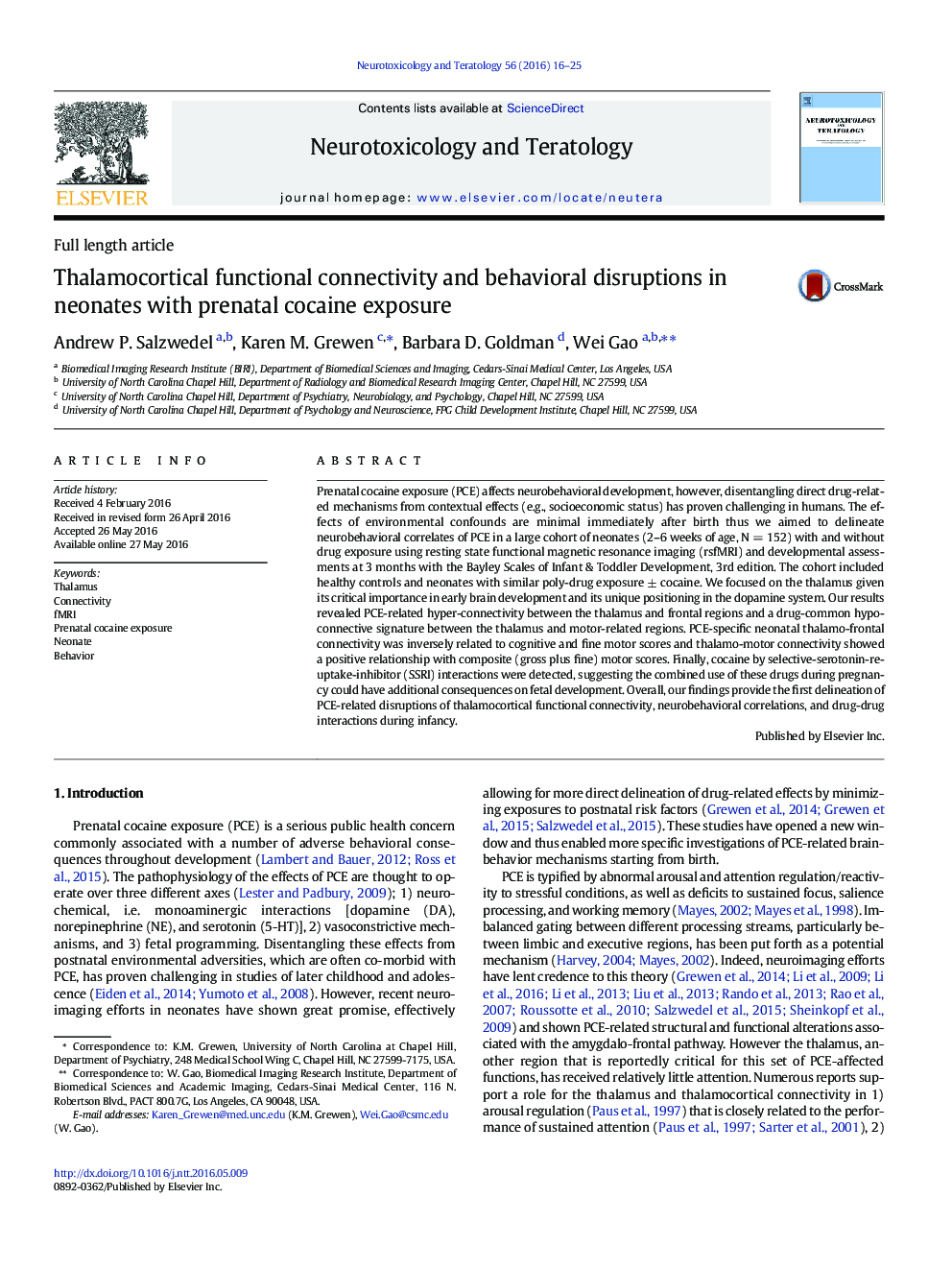| کد مقاله | کد نشریه | سال انتشار | مقاله انگلیسی | نسخه تمام متن |
|---|---|---|---|---|
| 2590801 | 1562080 | 2016 | 10 صفحه PDF | دانلود رایگان |
• Large cohort of neonates (N = 152) to study effects of prenatal drug exposure
• fMRI reveals cocaine specific disruptions in thalamocortical functional connectivity.
• Connectivity correlates with behavioral performance in cocaine-exposed group.
• Cocaine by selective-serotonin-reuptake-inhibitor (SSRI) interactions detected.
Prenatal cocaine exposure (PCE) affects neurobehavioral development, however, disentangling direct drug-related mechanisms from contextual effects (e.g., socioeconomic status) has proven challenging in humans. The effects of environmental confounds are minimal immediately after birth thus we aimed to delineate neurobehavioral correlates of PCE in a large cohort of neonates (2–6 weeks of age, N = 152) with and without drug exposure using resting state functional magnetic resonance imaging (rsfMRI) and developmental assessments at 3 months with the Bayley Scales of Infant & Toddler Development, 3rd edition. The cohort included healthy controls and neonates with similar poly-drug exposure ± cocaine. We focused on the thalamus given its critical importance in early brain development and its unique positioning in the dopamine system. Our results revealed PCE-related hyper-connectivity between the thalamus and frontal regions and a drug-common hypo-connective signature between the thalamus and motor-related regions. PCE-specific neonatal thalamo-frontal connectivity was inversely related to cognitive and fine motor scores and thalamo-motor connectivity showed a positive relationship with composite (gross plus fine) motor scores. Finally, cocaine by selective-serotonin-reuptake-inhibitor (SSRI) interactions were detected, suggesting the combined use of these drugs during pregnancy could have additional consequences on fetal development. Overall, our findings provide the first delineation of PCE-related disruptions of thalamocortical functional connectivity, neurobehavioral correlations, and drug-drug interactions during infancy.
Journal: Neurotoxicology and Teratology - Volume 56, July–August 2016, Pages 16–25
